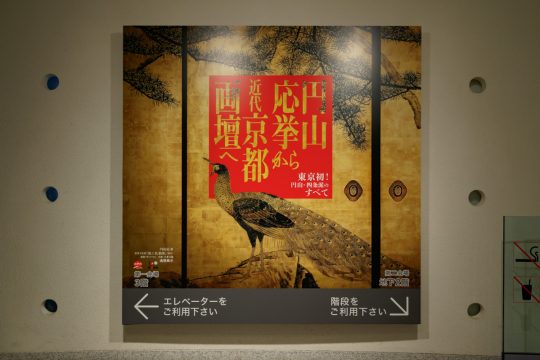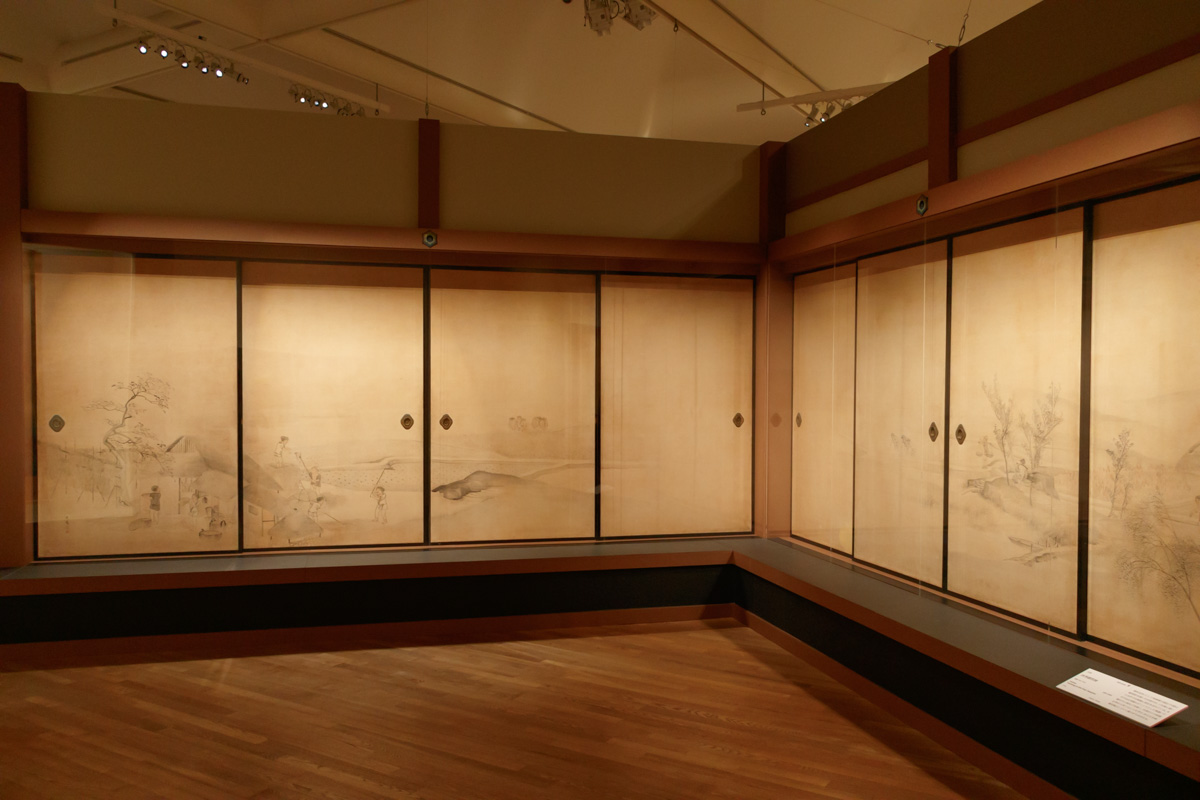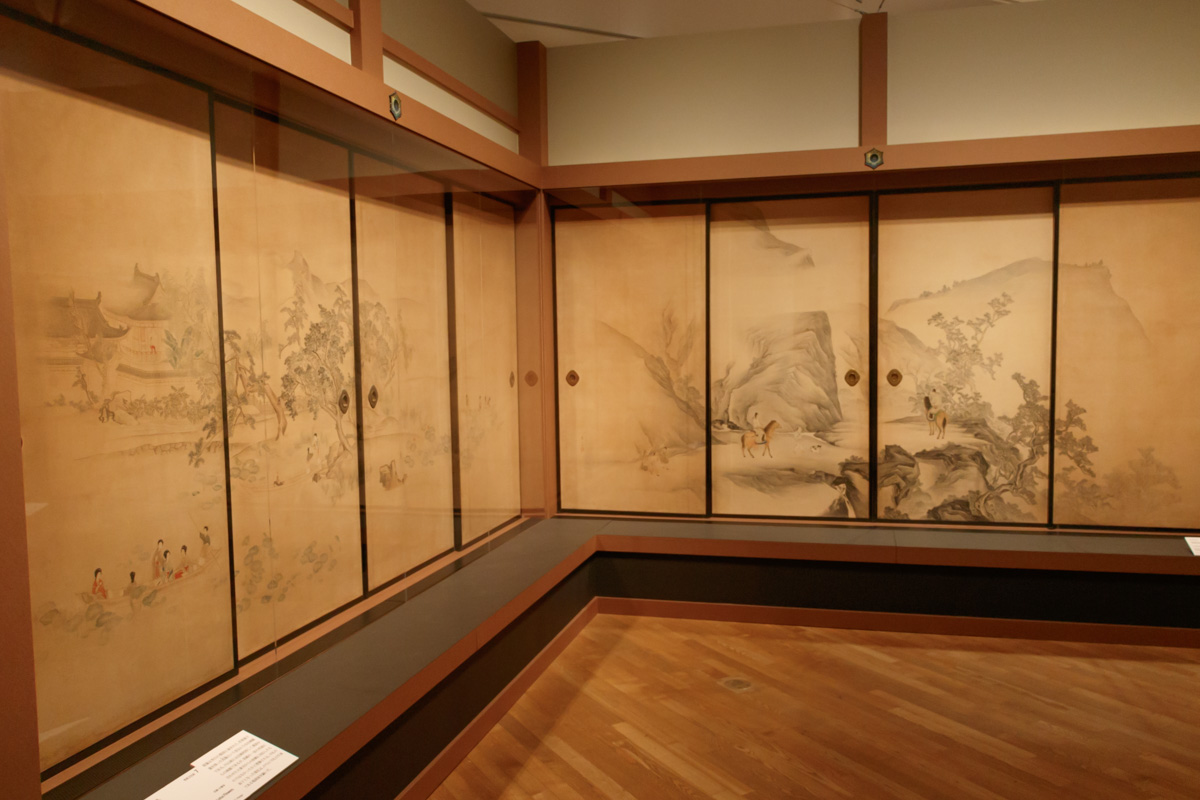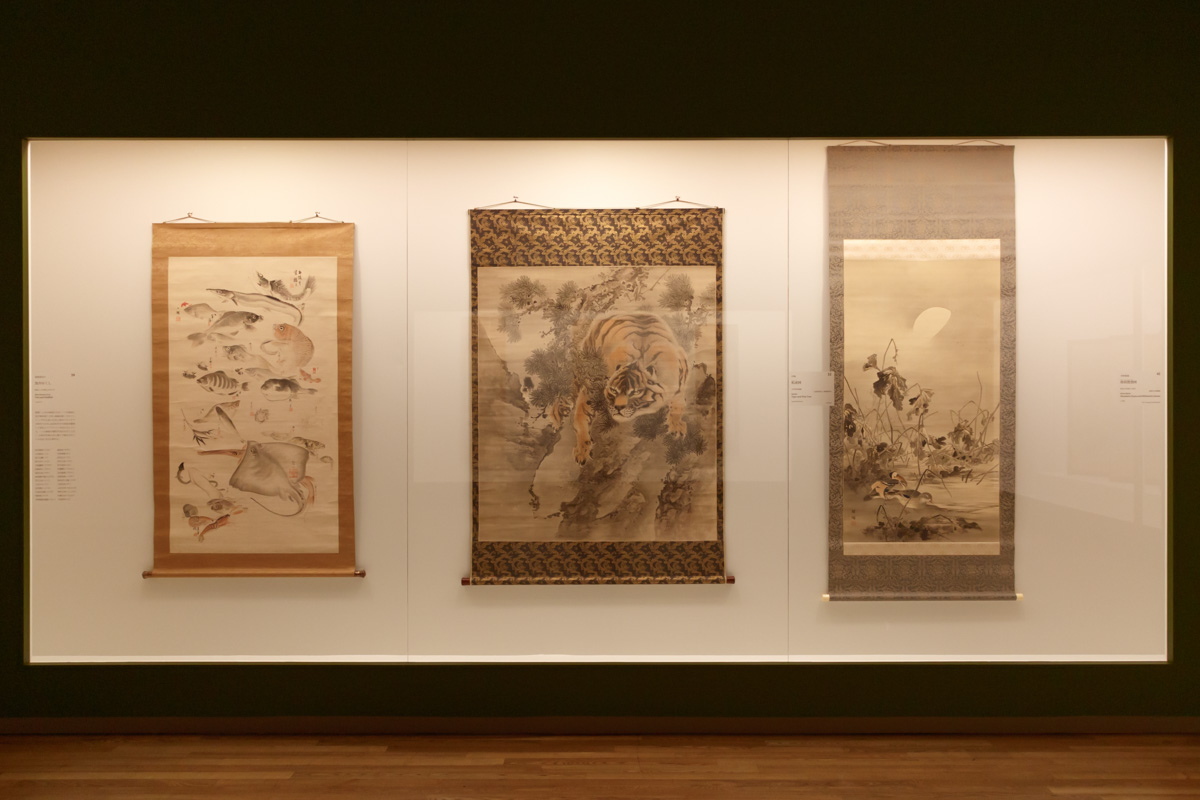The University Art Museum, Tokyo University of the Arts
From Saturday, August 3, 2019, at the University of Tokyo Art Museum in Ueno, Tokyo,
“LEGENDARY KYOTO PAINTING FROM MARUYAMA OKYO TO THE MODERN ERA” is held.
(Until Sunday, September 29)
The other day, this exhibition’s news preview was held, and this time we will deliver the report.

About Okyo Maruyama
Maruyama Okyo was born in 1733 (Kyoho 18) as a peasant child in the vicinity of Kameoka, Kyoto (Aita Village, Tamba Kuwana-gun).
However, life is difficult because of the poor family environment, and he was said to have been sent to the ministry from an early age.
One of the company’s customers, Owariya Kanbei, was a toy dealer that handled floats, telescopes, peep glasses, and dolls.
With the opportunity to draw eyeglasses there, Orai studied under Yui Ishida, who was cultivating the flow of the Kano school, and learned the perspective method of Western painting through eyeglasses. I refined the technique of painting.
The name will be called “Orai” from 1766 (Maywa 3).
And while meeting Yuten, the master of Mitsui-ji Enman-in Temple, and receiving various orders, he produces a number of masterpieces and continues his career as a painter.
A sketch (drawn sketch), which is created during this period and reflects the raw life.
In the era when the basics of painting at that time were only Yamato or Chinese paintings, Orai’s live-action paintings were simple and easy to understand, and would spread the paintings as familiar to the common people.
Fascinated by such a friendly and free-spirited painting style that is not bound by old traditions, there are many introductory students from all over the country, and in the 1780s, a leading school called the Maruyama school was formed and it became a school that can organize workshops I will continue.
What are Maruyama and Shijo factions?
Along with the Maruyama school, there is the “Shijo school” in the school centered on Kureharu, who studied at Yosyo-an village and later studied under special circumstances.
The Shijo school is a painting school named after , Goshun and his disciples who lived around Shijo-dori in Kyoto.
Because the artistic style of Goshun is influenced by Okyo, the two schools of Maruyama and Shijo are called “Maruyama / Shijo” as the two major schools, and the mainstream of Kyoto since the early days. It has a great influence on modern Kyoto art and has been handed down to the present day.
The highlight of the exhibition
By following the genealogy from Okyo, Goshun to modern times, this exhibition approaches the full picture of the Maruyama and Shijo factions, and reveals part of the Kyoto picture platform, which is an important part of Japanese art history. There are roughly 4 chapters.
The number of exhibitions is about 100, including 8 important cultural properties and 2 important works of art, making it the largest exhibition ever.
The most noticeable thing is the three-dimensional display of Daijoji Rie, which is called the last masterpiece of Okyo Maruyama.
“Daijoji Lacquer painting” has a breathtaking scale. The light changes the density of the ink. Please see from various angles.

In addition, we will also introduce 32 paintings by painters who follow the “Maruyama / Shijo school” system, which is followed by Goshun, Syurei Yamamoto and Kameoka Kirei.


One of the highlights is that only the first part of the Tokyo exhibition will have an important art piece “Eguchi Kimitzu” on display.
Maruyama Okyo’s “Eguchi Kimitzu” is one of the few beautiful Oijo pictures.
A special feature is that the renowned figure is drawn with a solid human body composition.
The way the hair falls off from the top of the hair is reproduced naturally.

Only the Tokyo exhibition is also on display for the newly discovered work, “Fish Seafood”.
“Seafood” is on the left of the photo. A total of 28 painters, who occupy most of the Maruyama and Shijo factions, draw seafood on one screen. Although it is drawn by 28 people, at first glance it is interesting that it is harmonious as if one painter is drawing.
In the center of the photo, “Matsutora” is a work depicting a representative tiger from the Kishi group that steps on the Maruyama system.

OTHER PRODUCT
Obun Kunii / Gyokusen Mochizuki “Flower / Beast / Beast Illustration”
A painting drawn by the Maruyama school’s fifth generation, Obun and Mochizuki school’s fourth generation, Gyokusen. The pale blue, dark blue, and greenish colors of the peacock feathers painted in glossy paint are vivid. I feel.

Seihou Takeuchi “Spring Warm”
Rosetsu Nagasawa “Rose Butterfly Lion Figure”
Two painters who were influenced by Ojo, Tsubaki and Yukiyuki. Both dogs are unique and cute.

Summary
The Maruyama / Shijo faction is vague in its definition of which is the Maruyama faction and which is the Shijo faction, and experts cannot judge.
There is no change in the Maruyama and Shijo faction, so there is no expression that makes Maruyama Okyo’s sketchy or strange, and it is gentle.
Therefore, it is important to appreciate the gentle changes and differences in the styles of each piece without thinking about difficult things.
The Maruyama-Shijo school has nurtured Kyoto’s unique culture against the Edo culture that evolved with rapid changes.
Why don’t you touch the works of Maruyama and Shijo at the University of Tokyo Art Museum?

Outline
| Exhibition name | LEGENDARY KYOTO PAINTING FROM MARUYAMA OKYO TO THE MODERN ERA |
| Session | Previous period: August 3 (Sat)-September 1 (Sun), 2019 Late: September 3 (Tue)-September 29 (Sun), 2019 Large exhibition changes in the second half of the previous period! * However, Daijoji Rie is displayed throughout the year 10:00 am-5:00 pm (Last entry 30 minutes before closing) |
| closing day | Monday * However, if Monday is a public holiday or a transfer holiday, it will be opened and closed the next day |
| Venue | Tokyo University of the Arts Museum of Art (Ueno Park) Main Building Room 1, 2, 3, 4 |
| Admission fee | General 1,500 yen (1,200 yen) High school / university students 1,000 yen (700 yen) * Free for junior high school students and younger * ( ) Is a group fee for 20 or more people * One group leader per 20 group visitors is free * Free for disabled people and one caregiver. Present a handicapped person’s handbook when entering the museum. Advantageous ticket information * Please check the official website for details. |
| Official site | https://okyokindai2019.exhibit.jp/ |
